
"I want the world to understand what Ukrainians feel" - artist Ihor Gnativ
Ihor Gnativ works in the style of hyperrealism, which reproduces reality as accurately as possible and can clearly show the pain of the war in Ukraine
An Espreso journalist spoke about art, work during the war and, in particular, hyperrealism with Igor Gnativ, a native of Zolochiv, Lviv region.
“Hyperrealism is extreme accuracy and a well-trained eye. But it's not just, as is often thought, drawing from a photo. You know, when I paint from a photo, I discard about 50% of what's there. After all, the photo is not perfect, and we want to exaggerate and make it more ideal than a photo. It takes from a month to 2-3 years to create a work in the style of hyperrealism. The same skin pores, maximum magnification, macro photography. Even the tiniest hairs on a mole are drawn in detail,” Ihor Gnativ said and showed his work, where every smallest detail is drawn clearly and carefully.
Before the start of Russia's full-scale invasion, the artist worked for several years on the Geometry of Life series, the basis of which was a combination of black and white stripes with bright red accents.
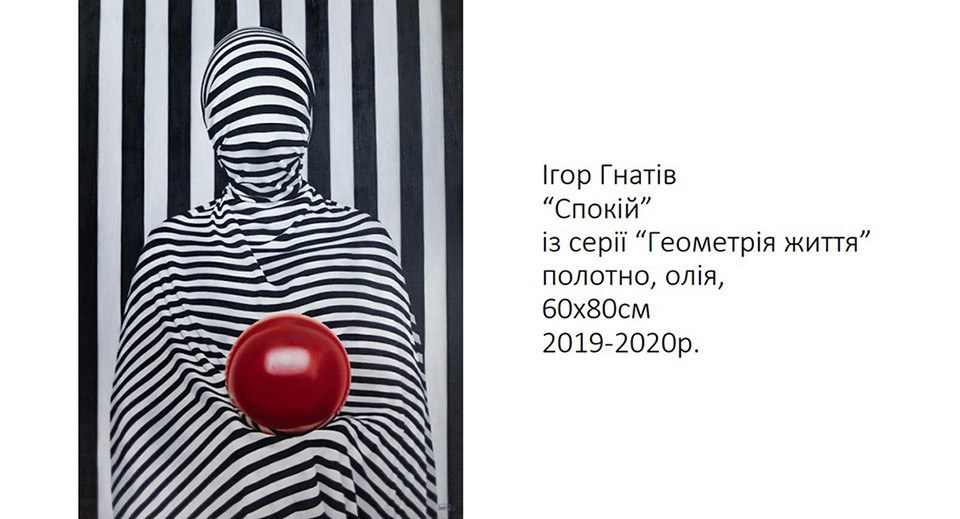
"When the full-scale war broke out, I was in my Gnativ Art Studio and working on a completely different series - Geometry of Life, in which everything was connected with alpha and omega, that is, everything has a beginning and everything has an end. At that moment, I didn't know how to proceed. People called from other cities about training, and I did not know what was happening, how to continue all the processes. So the first month I just drew constantly. And then I realized that it was necessary to show our tragic events, this genocide of Ukrainians. I called my photographer Mariana Boiko and said that I had a very powerful project. Then I called a volunteer I knew, together we bought supplies for the military and raised funds,” Ihor Gnativ recalls. “I said that I would like to draw a girl who survived those events, in particular, it was about Mariupol. We found that girl, her look, but the filming process seemed too stressful for her, and no one wanted to traumatize the child again. Therefore, another girl became the image of Mariupol. But this picture conveys emotions. This is a very psychological and deep topic.”
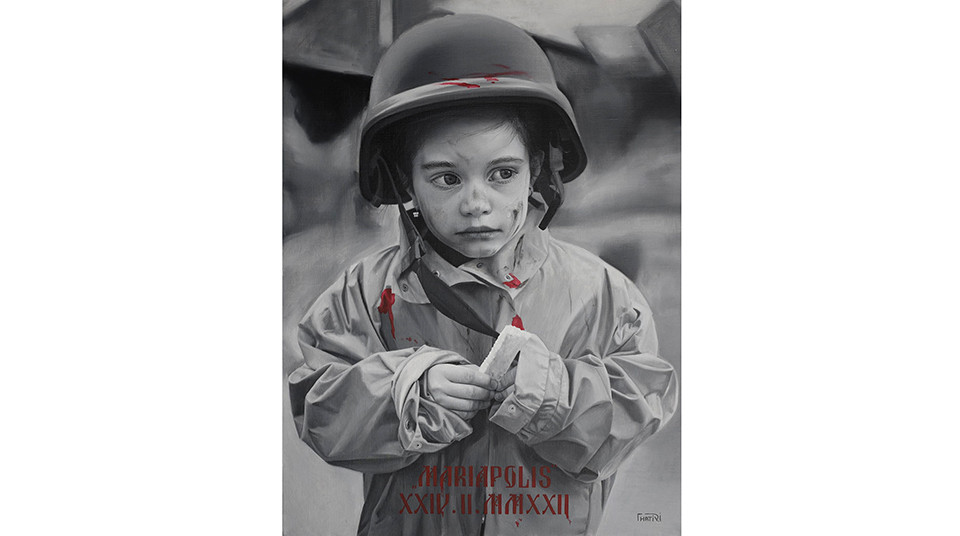
The work Mariupol is the first in the War for Independence series about the war and the Ukrainian tragedy, it has already been completed and is being presented in various cities of the US, and the first print from the picture was sold for USD 500, a large part of which goes to support Ukraine's Armed Forces. The original is also planned to be sold in the United States. The author spent about three months on its creation. In his opinion, this series is not intended so much for private collections as it should go to museums and galleries of various cities around the world. At the same time, these paintings are sold. In order to become not only a publicist of events, but also a material aid to the army of Ukraine.
“Usually in hyperrealism, everything is depicted in extreme detail, but here I wanted to highlight the hands and the face, to show the pain, to show what our people go through, what our people went through. These are souls and the blood shed for Ukraine. To look at those hands, at those eyes, people realized that it would touch their inner strings. Because the eyes and the hands are the main thing, and it's not just a look, it's a tragedy and a pain. And a piece of bread is an allusion to the famine that people experienced and are experiencing. Just look at the Holodomor, the heroes of the Ukrainian Insurgent Army, and Kruty - we always fought against the Russians. But there has never been such a full-scale war, when rockets are fired at you and you don't know whether you will get home now or not. I connected and rethought a lot while working,” the artist explained.
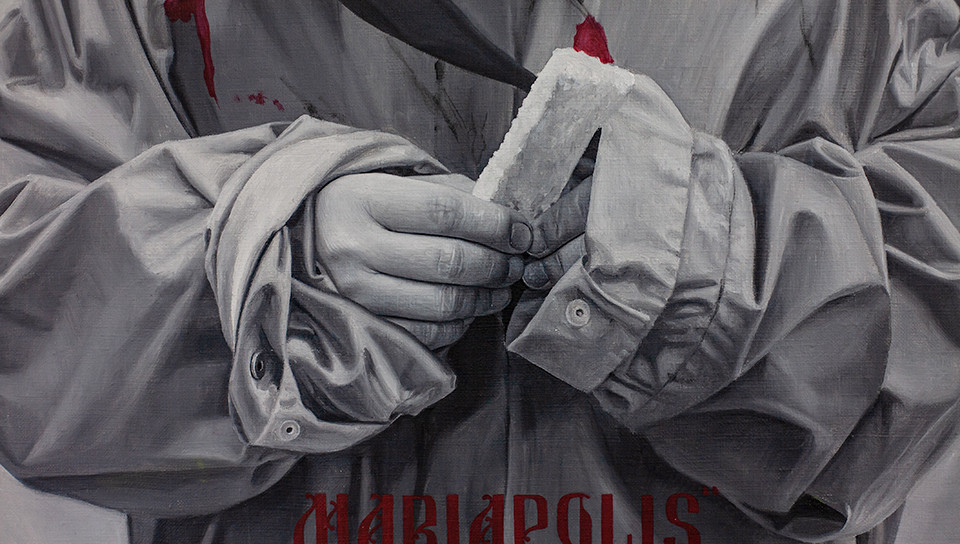
Now the artist is already working on a new work - Bucha. It is represented by a woman tortured and murdered by Russian inhumans, her hands are tied, she is lying on the bank of a river, and an enemy bullet is next to her.
“I show everything without exaggeration, everything that our people are really going through. I want these works to give people goosebumps and leave them in a state of a certain effect, so that they don't forget what is happening right next to them,” he said. “We live now here in the west in relative peace in the rear thanks to Ukraine's Armed Forces, but we constantly remember what is being done in the other part of the country, that the guys are giving their lives for it. I would like those people who see the works to think for a minute and decide, for example, to deny themselves something, and instead help by donating to medicine or the Ukrainian army.”
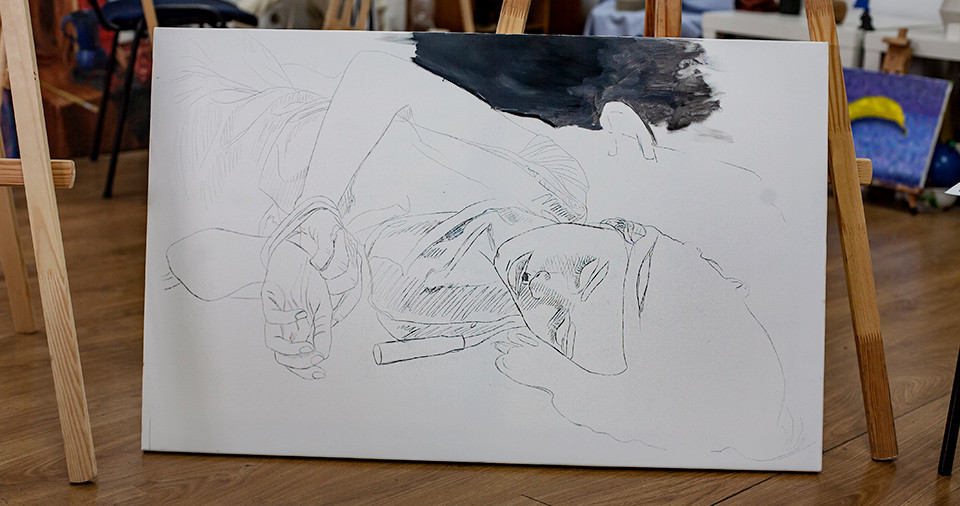
It is also very difficult for the artist himself to psychologically create such works, because he passes all those feelings, emotions and experiences through himself. However, he says, this is how he fights on his own front - the cultural one.
“It's psychologically difficult, emotions overflow. At certain moments when I was writing Mariupolis, I also felt creepy in places, I felt the effect of ants. After all, an artist gives a part of himself, he passes all those experiences through himself,” Ihor Gnativ said. “By the way, the inscription on the picture is made in Latin, and in order to reproduce it correctly, I consulted with the priests. This is also part of the symbolism, as well as the specified exact time of the beginning of the invasion.”
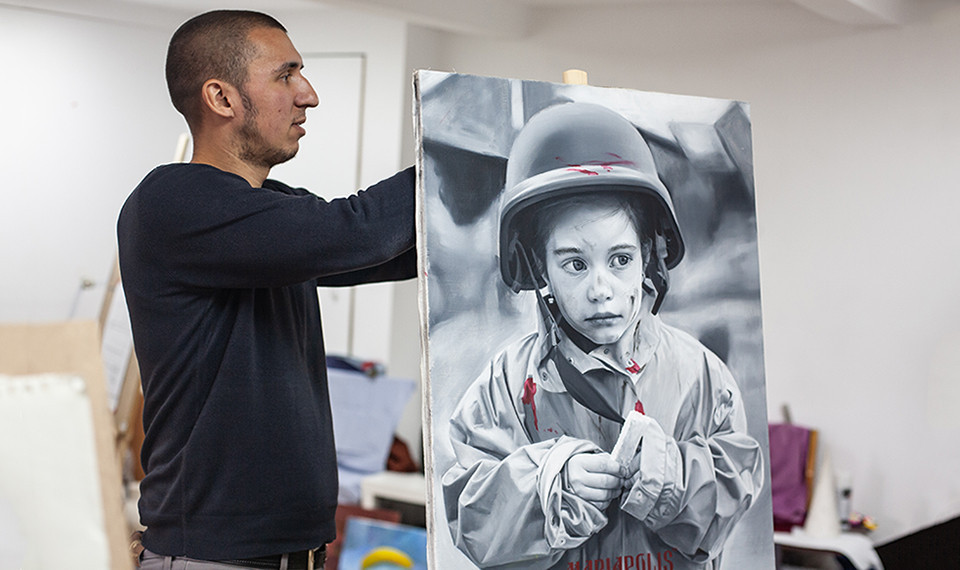
Along with working on such a complex project, Ihor Gnativ continues to teach. There are several artist studios in Lviv, to which there is always a queue of people willing to attend classes and master classes. In addition to the important base, the trend of hyperrealism will also be studied here. However, only after acquiring the basic knowledge.
“At the studio, I have completely formed a program according to which we will study hyperrealism. Of course, after the academic base - composition, drawing, and painting. After that, we will take up hyperrealism, starting with elementary exercises: which brushes to paint with, which paint and what to apply, what materials, how stretch marks are made. And we will gradually move on from stretch marks, plants, parts of the body, how skin pores are made, and pupils. The whole program is composed, but in order to be able to do it, there must be a base, a powerful academic base,” the artist emphasized.
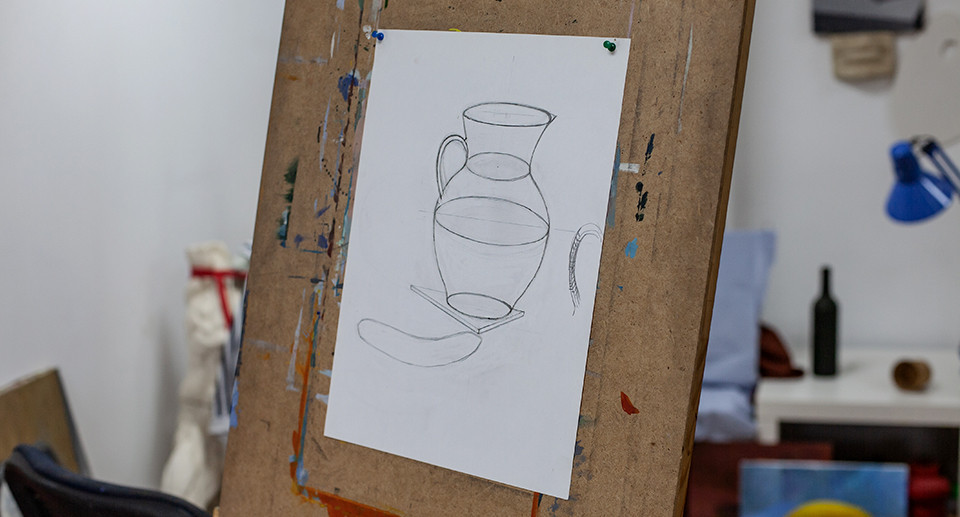
In addition, the artist is convinced that it is important to support art during the war, because it is the face of the country and presents it to the world. During the war and such difficult times for Ukraine, world art began to open doors for Ukrainian artists.
“We began to be perceived as artists, began to be invited to residencies, to exhibitions. This should have happened even before the war, because we really have interesting artists, regardless of the movement,” Ihor Gnativ said.
He also talks about the importance of popularizing Ukrainian art at home, so that their own people know well about the beautiful artists of their native country, and not just chase after foreign ones, because what is far away is not always better.
“Look at the current queues for Maria Prymachenko's exhibitions. That's how it should be. Ukrainian art needs to be promoted. Invest in it, popularize it in the world. We used to talk about her simply as a great Ukrainian artist, but now she's already a national treasure. This is how it should be, it is necessary to show and popularize Ukrainian artists. Ukraine needs to create its own art fairs, attract investors, and our government should join in. At present, in most cases, they are far from that, but they should promote artists and help them. Not just some acquaintances, but globally. To make open selections, to attract international experts, experts from various of our cities. To create powerful resonant projects. And when people see that, then queues will form. And to exhibit in these projects, and to see them,” the artist concluded.
- News













































